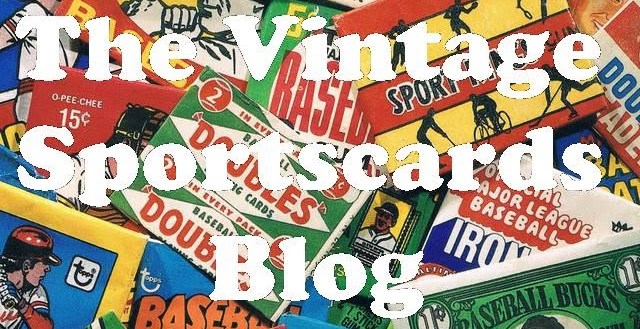Thanks to fellow collector Mike Borchardt for sharing this little piece of Hobby history.
It's the catalog for The Card Collector's Company and it's from 1963. The pages can be right-clicked and opened in a new window, which makes the text more readable.
The cover page points out that there's some value to the cards. And this was before most of us realized that. So whenever somebody says that collecting was fun in the 1960s or early 1970s because it wasn't so concerned about prices, here's some proof that somebody was profiting in 1963 on them.
That said...$7.50 for either 1951 Topps set? A dollar apiece for '52 high numbers? $18 for a complete '57 Topps set?
The second page has Bowman sets, plus Fleer/Leaf and football cards. Note here that the only major Bowman card singled out is the 1953 Stan Musial, and that it's worth two of the 1959 Fleer Ted Williams #68s. Also, note that with the 1952 Bowman football cards, the small versions are more expensive than the large ones.
The T206 cards are simply called "1910 Baseball Cards" and are available at 50 cents apiece or 10 for $4.00. That price can include Hall of Fame players as well. 1930s Goudey cards (called "Big League" Baseball cards) are 35 cents each. Also, $27.75 could purchase an entire run of Topps hockey through the 1962-'63 set, and another $11 can secure the last four Parkhurst sets.
This page has Exhibits available (including some Hall of Famers) at 7 cents apiece. Considering they were still being distributed in penny machines, that may seem like a high amount, but the price was for convenience of knowing which player you'd be getting. Also, note that the entire series of the current year (and the stats backs are mentioned) was available for $1.98.
This page has scorecards for the three New York teams going back to the "Dead Ball" era, as well as glossy photographs and Dormand postcards.
Books about baseball are on this page, but the collector in me focuses on two things: the 1962 Topps All-Star Rookie Award program and the "Baseball Wall Display" that is basically an uncut sheet of cards from the 1961 or 1962 Topps set. I'll mention here that The Card Collectors Company was headed by Woody Gelman, who worked closely with Topps and could easily get uncut sheets whenever he needed them.
While some generic items are mentioned here, I'm looking at the metal cabinet that holds 30,000 cards. I've actually seen some "old school" collectors who've used a similar cabinet to store their collections. $50 (plus shipping) was an awful lot of money in 1963, so they were obviously geared towards the hardcore collectors.
Plastic pages hadn't yet been developed, so there's an ad for "loose leaf" pages that hold four cards and are die-cut to show the back. There's also a copy of the
American Card Catalog (then in its final printing) and a host of complete non-sports card sets.
Lastly, Mike even scanned the mailing envelope that held the catalog 49 years ago. Note how the postmark doesn't yet include any ZIP code:
Thanks again, Mike, for that trip into the history of our Hobby.






















































